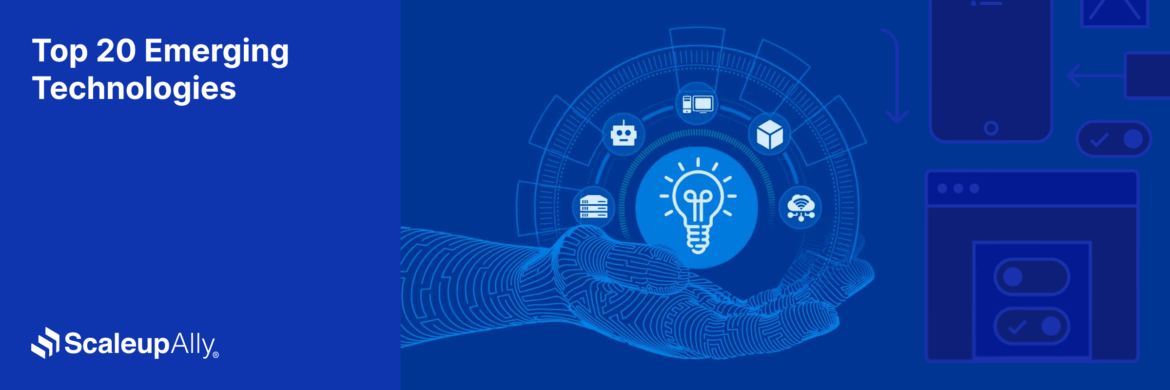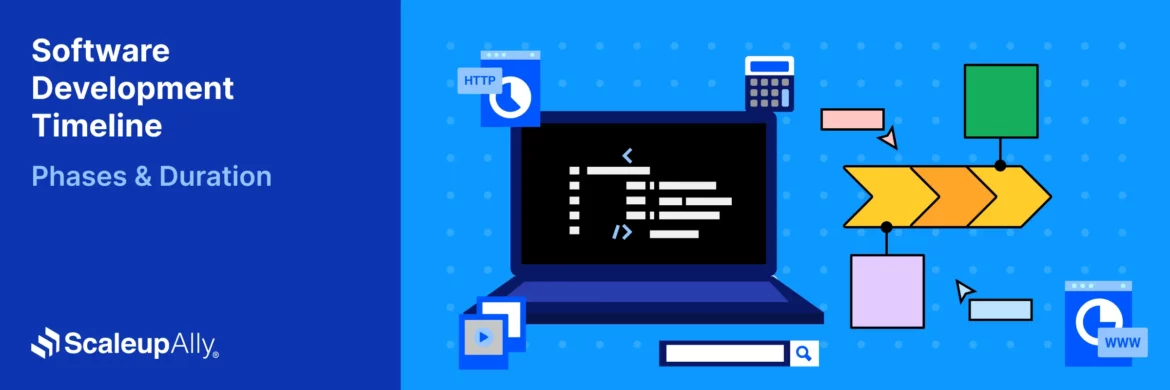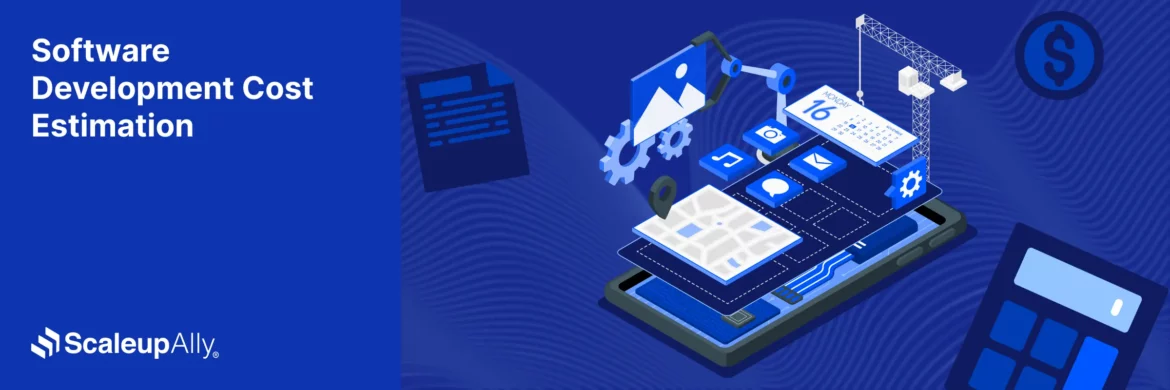
What is Serverless Computing & How does it work?
Suprabhat Sen | December 20, 2023 , 10 min read
Table Of Content
One term that has gained significant traction recently is “serverless computing.” While the name suggests the absence of servers, the reality is more complex. Serverless computing still relies on servers, but the key difference lies in managing the infrastructure. Serverless computing is made for developers to create and run apps easier. It achieves this by simplifying the complexities of infrastructure management. Considering that, let’s look into serverless computing, understand it, and explore how it works.
Key Takeaways
- Serverless computing allows developers to deploy code without managing servers.
- Key features include event-triggered function execution, pay-as-you-go pricing, and stateless architecture.
- Serverless computing enhances scalability, reduces operational overhead and accelerates time-to-market.
- Challenges include cold start latency, limited execution time, vendor lock-in, and debugging difficulties.
- Emerging trends like edge computing, multi-cloud serverless setups, and stateful function support are shaping the future of serverless computing.
What is Serverless Computing?
Put simply, serverless computing lets you run code without dealing with servers. Before, you had to set up and look after your server or servers, which was costly and required technical skills. With serverless computing, you just upload your code, and someone else handles the server side for you.
Serverless computing represents a paradigm shift in approaching application development and deployment. Unlike traditional models that rely on dedicated servers, serverless computing abstracts away infrastructure management, allowing developers to focus solely on code.
How Does Serverless Computing Work?
As said before, serverless computing doesn’t mean no servers. Instead, it’s a way of using cloud computing where the cloud provider takes care of the servers, and developers can just focus on writing their code. Understanding how serverless computing works empowers developers and decision-makers to use its benefits effectively.
Here’s how it works.
1. Event Triggering
Serverless computing revolves around events. These events could be HTTP requests, changes to a database, file uploads, or scheduled tasks. When an event occurs, it triggers the execution of a specific function.
2. Function Execution
Functions are the core of serverless architecture. These are compact, specialized snippets of code crafted by developers to carry out particular tasks. When a certain event takes place, the corresponding function is triggered. Functions are stateless and do not store information across different executions.
3. Dynamic Resource Allocation
Unlike traditional models where resources are pre-allocated, serverless platforms dynamically allocate resources to execute functions in response to events. This dynamic scaling ensures optimal resource utilization and cost efficiency.
4. Pay-as-You-Go Model
One of the key advantages of serverless computing is its cost model. With the pay-as-you-go model, you only pay for the actual compute time consumed by your functions. This contrasts with traditional models, where resources are provisioned regardless of usage.
5. Stateless Execution
Serverless functions are designed to be stateless. They operate independently of each other, promoting modularity and scalability. This aligns with the microservices architecture, where applications are composed of small, loosely coupled components.
6. Cloud Provider Management
The cloud service provider (e.g., AWS, Azure, Google Cloud) plays a pivotal role. They manage the underlying infrastructure, handling server provisioning, maintenance, and security tasks. This allows developers to focus on writing code rather than managing servers.
7. Ecosystem Beyond Functions
While functions are fundamental, the serverless ecosystem extends beyond code execution. Services like API Gateways and Logic Apps enable the seamless orchestration of functions into complete applications. This broader ecosystem simplifies the creation of APIs, workflows, and integrations.
Impact of Serverless Computing on Businesses
Let’s look at how serverless computing can enable businesses to focus more on their core competencies while offloading infrastructure management to cloud providers. This shift can lead to improved resource allocation, faster time-to-market for products and services, and a competitive edge in the market.
1. Applications Across Industries
Serverless computing isn’t confined to tech enthusiasts; it’s a game-changer across industries. From enhancing customer experiences in e-commerce to optimizing supply chain operations, serverless architecture finds application in diverse scenarios. For instance, in the finance sector, serverless technology can facilitate rapid development and deployment of financial applications, ensuring agility in a dynamic market.
2. Enhancing Scalability and Agility
Scalability is a buzzword in business and for a good reason. Serverless computing, by its very nature, excels in this domain. As demand for an application or service grows, serverless platforms automatically scale resources to meet the increased load. This elasticity is particularly valuable for businesses with fluctuating workloads or those aiming for rapid expansion.
3. Mitigating Operational Overheads
Traditionally, managing servers required dedicated personnel and resources. With serverless computing, businesses can alleviate much of this operational burden. The cloud service provider oversees server provisioning, maintenance, and security, allowing organizations to focus on innovation and core business objectives.
4. Security Considerations in Serverless Environments
Contrary to common misconceptions, serverless computing doesn’t compromise security but redistributes responsibilities. Cloud service providers are crucial in securing the underlying infrastructure, while developers are responsible for securing their code. This shared responsibility model ensures a robust security posture.
5. Adopting Serverless: Considerations for Decision-Makers
Before embracing serverless computing, decision-makers must weigh various factors. Considerations include the complexity of existing applications, integration requirements, and potential cost savings. A phased adoption approach, starting with non-critical workloads, allows organizations to test the waters before fully committing to serverless architectures.
Best Practices for Serverless Implementation
1. Granular Function Design
Break down applications into smaller, focused functions. This aligns with the serverless philosophy and facilitates easier debugging and maintenance.
2. Effective Monitoring and Logging
Implement robust monitoring and logging mechanisms. Serverless platforms offer built-in tools for tracking function execution, errors, and performance, enabling proactive issue resolution.
3. Optimizing Cold Starts
Address the challenge of cold starts (initial latency when a function is invoked) by optimizing code and leveraging warm-up techniques. Understanding and mitigating cold starts is crucial for maintaining optimal performance.
4. Security-Centric Development
Prioritize security from the outset. Regularly update dependencies, follow security best practices, and conduct thorough testing to identify and address potential vulnerabilities.
5. Cost Monitoring and Optimization
Continuously monitor and optimize costs. Leverage cloud provider tools to analyze resource consumption and identify opportunities for cost savings. This aligns with the pay-as-you-go model inherent in serverless computing.
Emerging Trends in Serverless Computing
Let’s explore some trends in serverless computing that you should stay updated on.
1. Edge Computing Integration
Serverless is expanding its reach to the edge. By bringing computation closer to end-users, organizations can reduce latency and enhance the performance of applications, a particularly critical consideration for real-time applications.
2. Multi-Cloud Serverless Architectures
Organizations are exploring multi-cloud strategies, leveraging serverless offerings from multiple providers. This approach enhances resilience, reduces vendor lock-in, and allows businesses to choose the best services from different cloud providers.
3. Advancements in Function Composition
As serverless matures, there’s a focus on enhancing the composition of functions. This involves seamlessly integrating multiple functions to create more complex workflows and applications, offering increased flexibility and functionality.
4. Improved Support for Stateful Applications
While serverless has been synonymous with stateless functions, there’s a growing emphasis on supporting stateful applications. This evolution enables serverless architectures to handle a broader range of use cases, including those requiring persistent data.
Advantages and Disadvantages of Serverless Computing
Understanding the advantages and disadvantages of serverless computing is crucial for making informed decisions about its adoption. While serverless brings notable benefits, evaluating its suitability for specific use cases and considering the associated challenges is essential.
Advantages of Serverless Computing
1. Cost Efficiency:
- Pay-as-You-Go Model: Serverless computing operates on a pay-as-you-go pricing structure, where users are charged solely for their computing resources. This approach often leads to substantial cost reductions compared to conventional server-based models.
2. Scalability:
- Automatic Scaling: Serverless platforms dynamically scale resources based on demand. This automatic scaling ensures applications can handle varying workloads, providing enhanced scalability without manual intervention.
3. Operational Simplicity:
- Reduced Management Overheads: With serverless, cloud providers handle server provisioning, maintenance, and security. This reduces operational complexities for development teams, allowing them to focus on writing code rather than managing infrastructure.
4. Rapid Development:
- Faster Time-to-Market: Developers can focus solely on writing code, accelerating development. Serverless architectures encourage smaller, single-purpose functions, facilitating modular and rapid development.
5. Event-Driven Architecture:
- Flexibility and Responsiveness: Serverless architecture is naturally event-driven, enabling applications to react dynamically to HTTP requests, database modifications, or file uploads. This design is particularly suitable for real-time and event-based use cases.
6. Automatic High Availability:
- Built-In Redundancy: Serverless platforms often have built-in redundancies across multiple availability zones, ensuring high availability and fault tolerance without additional effort from developers.
Disadvantages of Serverless Computing
1. Cold Start Latency:
- Initial Execution Delay: Serverless functions may experience a latency known as “cold start” when invoked for the first time or after a period of inactivity. This delay can impact real-time applications.
2. Limited Execution Time:
- Time Constraints: Serverless platforms impose execution time limits on functions. Long-running tasks may be better suited for traditional server-based architectures.
3. Vendor Lock-In:
- Dependency on Provider: Serverless applications are tied to the features and limitations of a specific cloud provider. Switching providers may require substantial code refactoring.
4. Stateless Limitations:
- Stateless Functions: The stateless nature of serverless functions can be a limitation for applications that require persistent connections or stateful interactions between components.
5. Debugging Challenges:
- Limited Debugging Tools: Debugging serverless functions can be challenging. Limited tools and the ephemeral nature of functions make identifying and resolving issues more complex.
6. Potential for Resource Contention:
- Shared Resources: In a multitenant environment, resource contention is risky. High loads or resource-intensive tasks from other users on the same serverless platform may impact performance.
Conclusion
From its scalable and cost-effective nature to its transformative impact on development workflows, the benefits of serverless computing are reshaping the digital space.
As you embark on your serverless journey, remember that successful implementation requires a sophisticated understanding of best practices, consideration of emerging trends, and a commitment to security and optimization. Embrace the serverless revolution, and watch as your applications sparkle with newfound efficiency and innovation.
Frequently Asked Questions
Q: Can I Run Stateful Applications with Serverless Computing?
While serverless is designed for stateless functions, there are emerging solutions and services that allow for limited statefulness. Evaluate specific cloud provider offerings for stateful serverless applications.
Q: How Does Serverless Handle High Availability?
Serverless platforms often have built-in redundancies across multiple availability zones. This ensures high availability and fault tolerance without additional effort from developers.
Q: Can I Use Serverless Computing for Long-Running Tasks?
Serverless platforms impose execution time limits on functions. Long-running tasks are better suited for traditional server-based architectures.
Q: Is Serverless Computing Suitable for All Types of Applications?
Serverless is well-suited for event-driven and scalable applications. However, it may not be ideal for long-running tasks or applications with strict latency requirements. Evaluate your application’s characteristics before choosing serverless.
Related Blogs

Top 20 Emerging Technologies of 2026
Discover the top 20 emerging technologies of 2026. Explore which innovations are driving change across healthcare, finance, manufacturing, and other crucial industries.
ScaleupAlly Team
Dec 16 ,
9 min read

Software Development Timeline: Phases, Duration & Estimation Guide
Understand the software development timeline with phase durations, key factors, hidden delays, and practical methods to estimate project time.
Suprabhat Sen
Nov 29 ,
16 min read

Software Development Cost Estimation Guide: What’s Included & What Affects the Price
Explore software development cost components, major pricing factors, and practical estimation methods to plan your project accurately from start to finish.
Suprabhat Sen
Nov 29 ,
14 min read


